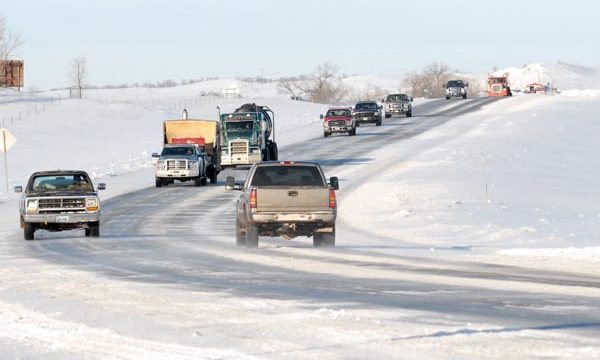What If The Oil Boom Didn't Actually Make North Dakota Roads Less Safe?

Last week we got news from the Associated Press that North Dakota traffic fatalities were at their lowest in five years in 2015. “Preliminary data released by the state Transportation Department and the Highway Patrol show 131 motor vehicle fatalities in 2015, down 3 percent from 2014 and the lowest number since 105 fatalities in 2010,” the AP reported.
That’s certainly a nice development, though there’s a lot more to the story.
For instance, the amount of traffic on North Dakota highways – the state’s vehicle miles traveled number – also went down in 2015 to 10.065 billion miles. That’s a 3.55 percent decline, and the lowest number of miles traveled since 2011. Here’s the trend line via data from the Department of Transportation:
What this decline means, along with the slight year-over-year decline in traffic fatalities, is that North Dakota’s traffic fatality rate – which is to say the number of fatalities in the context of overall traffic – has stayed relatively flat. In fact, it went up slightly in 2015 to 1.30 fatalities per million vehicle miles traveled as compared to a 1.29 rate in 2014. Here’s the trend line juxtaposing vehicle miles traveled and the state traffic fatalities count:
As you can see, the raw fatalities figures were actually down during the peak traffic years (which coincided with the peak of the state’s oil boom). Overall, since 2005, the trend for the state’s traffic fatality rate has been downward. Meaning that far from the oil-driven boom in the state’s traffic making the roads less safe, they actually seemed to get safer.
Traffic and highway safety was something critics of increased oil and gas development focused on. To hear them tell it you’d think North Dakota was seeing some sort of an apocalypse. The truth, though, is that while traffic increased and fatalities increased with them, the rate of fatalities on the state’s highway stayed flat and actually seemed to decline during the peak oil boom years.
Inconvenient truth, that.
Which isn’t to say that the big spike in traffic didn’t make driving on certain western North Dakota roads a harrowing experience. I think anyone familiar with driving the highways near, say, Watford City in McKenzie County can attest to that.
Thankfully road construction and improvement is catching up out west. That’s a good thing.
But how traffic makes us feel is a poor metric. More important are the outcomes, and based purely on the outcomes, North Dakota came through the oil boom with little change in highway safety outcomes.







